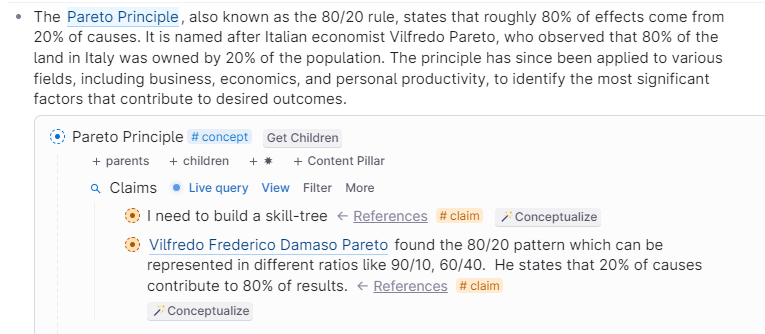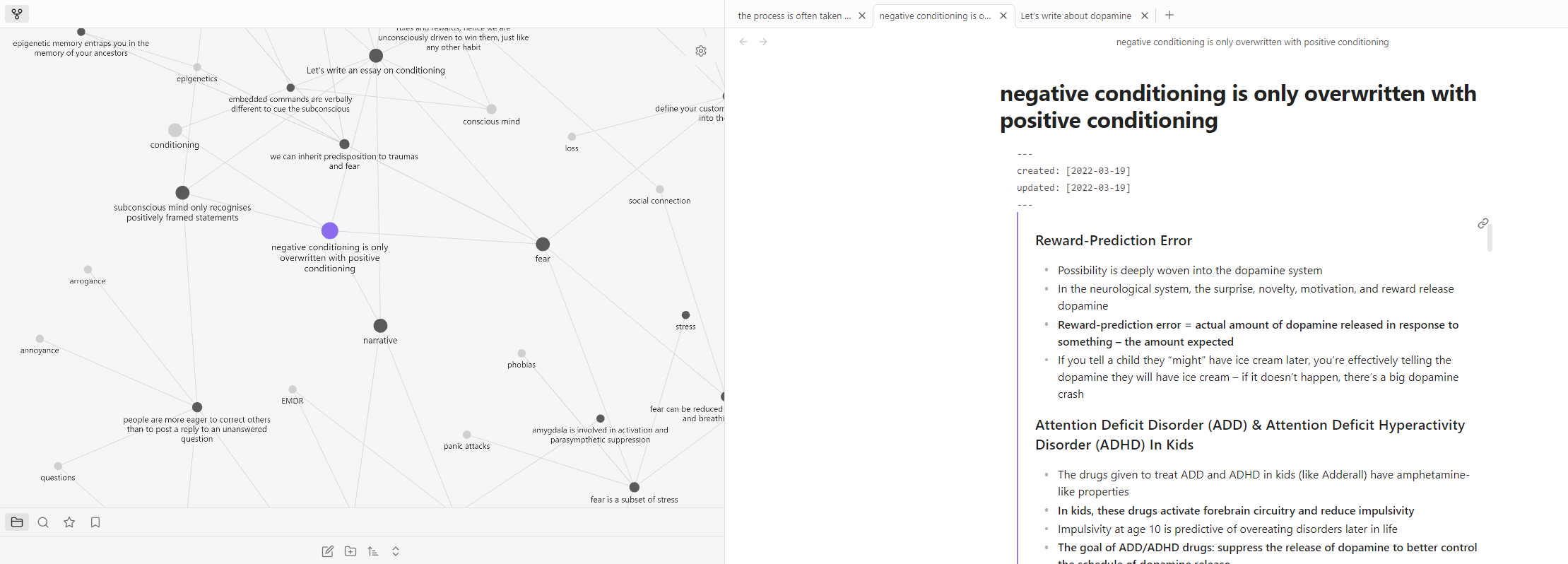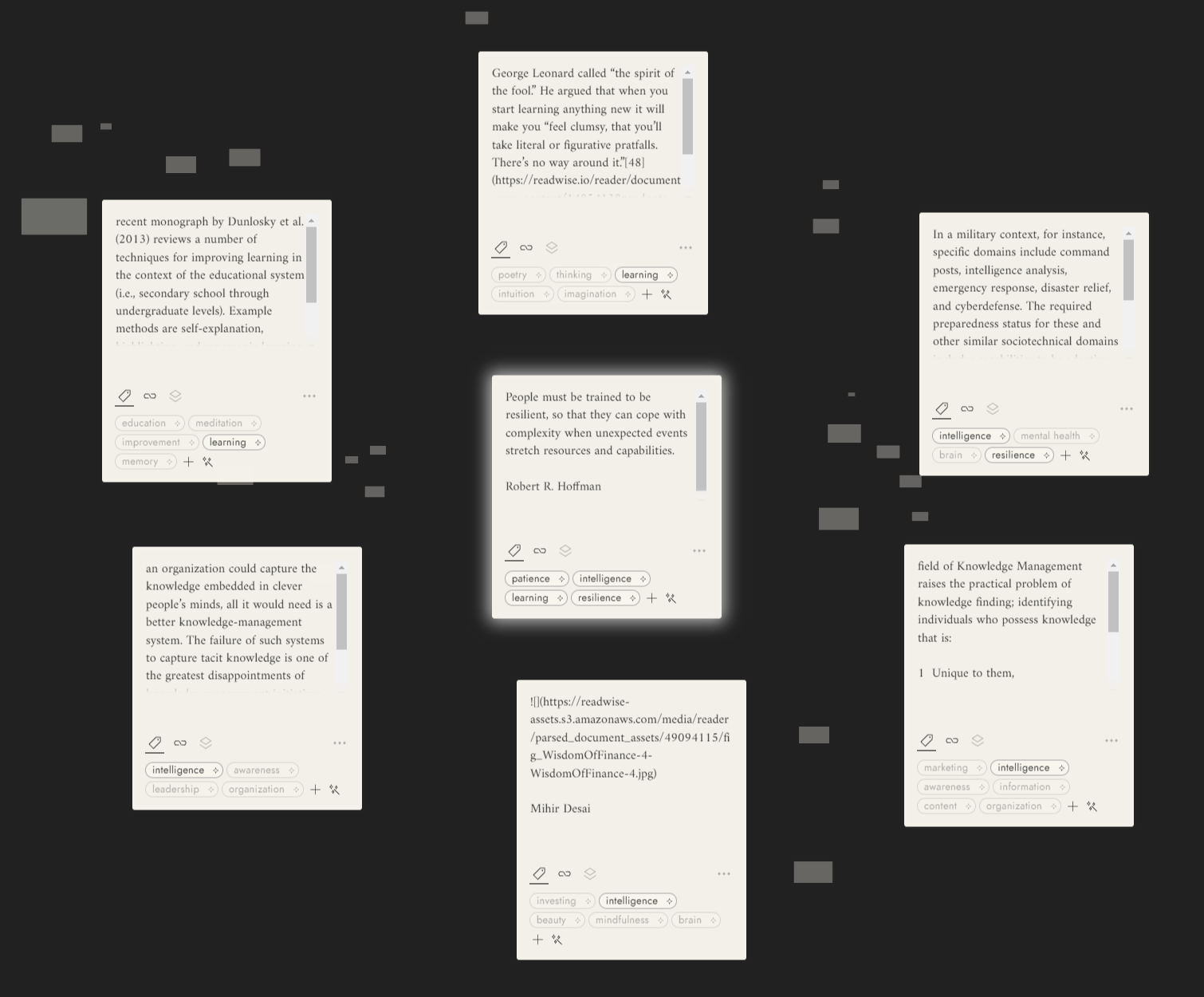Explain the problem as you see it
One of the biggest problems and friction points of many personal knowledge softwares is that they have never sufficiently solved the resurfacing issue. I believe that it is not just allowing it to be accessed (many PKM can have some kind of workaround to resurface stuff) but the number of clicks it takes to reach resurfacing of material. Nick Milo called these notes 'zombie notes', essentially notes that are not linked and have nearly zero chance of resurfacing. The issue becomes far more prevalent in Tana since there are no 'notes' in Tana, just nodes - there is a lot of potential for repeated, duplicated, zombie nodes.
Why is this a problem for you?
This is a problem for me because of the friction it takes to find a resurfaced node.
Here is an example of how I'm able to resurface a previous node while working on something:

Here I have two layers I need to do to get to the old material:
1) shift-click "Pareto Principle" to open up the node below
2) open up the live search node "Claims"
If you are thinking "this are just two steps", then I think this is completely wrong. You see, in our usual pattern of thinking, we are pulling associations into our minds all the time. We re-cognise (having cognised it before) and old material is resurfaced to be used immediately.
Here is an example of a parallel example of "resurfacing" happening in Obsidian:

What you see above is that whenever I mention a particular node, it will not just bring up that node - it automatically shows in its interface all the associated nodes - I see ideas 2, 3, 4 levels deep. All of these ideas merge into this very moment when I'm typing it.
This is how napkin.one does it elegantly:

Robert Haisfeld also recently demoed a concept which also valued resurfacing:
https://www.youtube.com/watch?v=9edLOMad7Cc
Suggest a solution
I'm not suggesting it has to be a graph view, because napkin.one did it in their own special way. I'm kind of thinking out loud here, trying to be constructive in some way without being too abstract. I think there should be some kind of solution to minimise the difficulty of getting from current context to resurfaced context. There should be some way to get the ball rolling. What do you guys think - resurfacing - valuable or not so valuable?
Pros: Reduces duplication, streamlines processes, builds on existing context and work instead of restarting all the time, makes collaboration even more powerful by building on existing contexts made by others - it is literally compounding on steroids.
Then the question comes: "Is this for just a select minority of users?" And I'd argue that people do not know how valuable this can be until it is made easy for them, just like how many people probably thought AI was too sophisticated until it was made easier in Tana. I did not realise how powerful direct resurfacing can be until I used it. It creates a cycle of continuously improving work.
